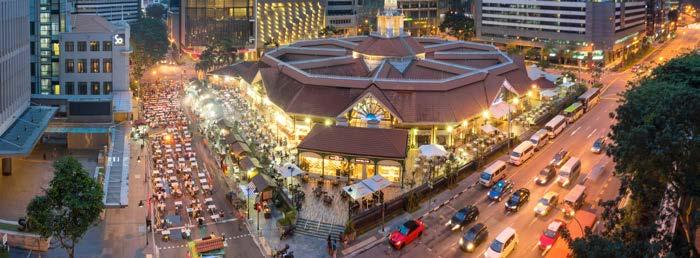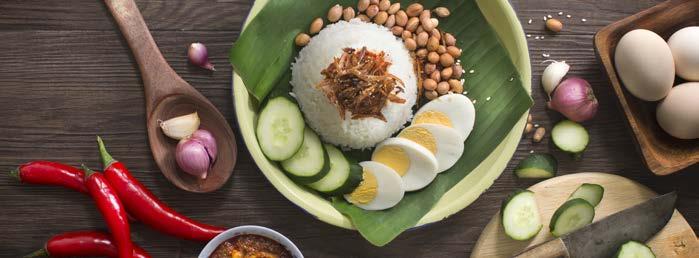
7 minute read
Regional Integration Of Capital Markets: Lessons From Europe
As a result, today an investor looking to Europe has a range of options for trading all the main European equities and bonds with simplified clearing and settlement. What are the lessons from this brief history?
1. The private sector had a key role in delivering an integrated European market – brokerage firms providing a single gateway to multiple markets, custodian banks providing pan-European settlement and innovative platforms creating pan-European trading systems.
Pan-European equity trading emerged in the late 1980s when the London Stock Exchange provided a platform called SEAQ-I for trading European equities. This was hugely successful: by 1990 over 50% of Swedish and Dutch share trading took place on SEAQ-I rather than the home market, and so did over 20% of French, Italian and Spanish share trading. The reasons for this were high fixed commissions and turnover taxes and onerous trade publication requirements in the home markets.
However, in 1993 the EU passed an important piece of legislation, the Investment Services Directive (1993), which resulted in trading moving back to the domestic markets. It included two important powers for investment banks: it created passporting, so that investment firms authorised in one member state could provide investment services in other member states; and it gave them the right of remote access to exchanges in other member states. As a result, national exchanges outside the UK removed the requirement to be located locally, introduced electronic trading platforms and removed or reduced fixed commissions and turnover taxes. The result was that an investment bank based in one centre (typically London) could be a member of and trade remotely on markets throughout Europe.
Trading required post-trade arrangements and custodian banks responded by offering clients a panEuropean service built by integrating their branches in individual countries.
At this point in the late 1990s an investor could trade and settle across Europe using one investment bank and one custodian bank, which provided access to multiple national markets. However, it was expensive because of the need to work with many different national regulations and procedures. Numerous studies demonstrated that the cost of trading and settling in Europe was a multiple of that in the USA.
This led to a push for harmonisation. Particularly notable was the Giovannini Report in 2001, which identified 15 barriers to cross-border settlement, arising out of differences in national market practice, differences in national tax procedures and issues of legal certainty affecting cross-border transactions. Following this report, a work programme got under way to eliminate these barriers, led principally by market participant firms.
The European market entered a new phase with the implementation of the Markets in Financial Instruments Directive (MiFID) in 2007. This opened up the possibility of a trading platform being authorised without the listing obligations of an exchange. The first of these Multilateral Trading Facilities for equities was Chi-X in 2007, followed by BATS in 2010. MTS, originally a trading platform for Italian government bonds expanded to cover all European government securities.
The development of pan-European trading platforms prompted further post-trade developments. Trading was also supported by the development of cross-border central counterparty systems, led by EuroCCP which was launched in 2007.
In 2006 the European Central Bank proposed a panEuropean settlement platform called T2S to link national securities settlement systems, which went live in 2015.
2. Their ability to do this required strong support from the public sector – regulations giving firms a passport to operate across Europe, regulations allowing new entrants to markets, all helped in driving harmonisation to reduce costs.
3. The level playing field created by harmonisation and European passports opened competition between exchanges, trading platforms, clearing and settlement providers and investment firms that resulted in new solutions and increased efficiencies.
4. None of this initially required technical infrastructure. PanEuropean trading platforms arrived more than ten years after Europe came to be seen as one market. They created the need for panEuropean central counterparties and the European settlement platform came last.
Notable in this history is the small role played by national stock exchanges. Unlike other parts of the world, there was no attempt to build links between national exchanges. Each of the two largest pan-European trading platforms now has considerably higher trading volumes than any of the national exchanges.
The overall lesson is that the desire from investors to see a region as one market and a level playing field that enables banks and brokers to support them are the key ingredients in building an integrated regional market.
Hugh Sachs Simpson Senior Partner, Bourse Consult

A Foodie’s Guide To Singapore
We asked Bernie Chew and his team at Northern Trust to give us the low down on some of the local life and specialities in Singapore. Happy eating!
Food in Singapore is usually found based on the following:
Criteria
Price (there are cheap and expensive options – so it is up to you – but stay away from the super cheap – there are “tummy” risks involved)
Air-Conditioning (if you don’t have this … you will definitely notice the Singapore heat and humidity)
Queues (this does not guarantee a fantastic meal but it seems to have become a national pass-time)
Instagrammable (this usually would mean nice to photograph but not usually enjoyable)
Locations
Local coffee shops, hawker centers (usually can see the hustle and bustle of community life but be prepared for the crowds and the heat)*
Food courts (with air-conditioning)*
Fast Food (don’t unwisely use up the calories)*
Restaurants (Michelin stars to local favorites)
* Please be warned of the “chope” (meaning “to reserve” in local parlance) culture in Singapore – a packet of tissue left on the table or seat is NOT a generous gesture for free usage – it is meant as a form of “reservation” of the seat or table by individuals or a family who is around somewhere to buy their meals. Also note that in recent times, the concept of the “tissue packet” has expanded to include lanyards, name-cards, umbrella, shopping bags … so beware and it is safer to ask first before sitting down!
The widest variety is to head for local coffee shops, hawker centers and food courts which an icon of the Singaporean way of life, each offering numerous cuisines and a wide variety of good food at affordable prices.
What to get, where
Breakfast
Kaya Toast with soft boiled eggs (sets) - A quintessential Singaporean breakfast (& “any time of the day” snacks) of some strong local coffee accompanies with kaya toast this is usually found in any local coffee shops & popular franchises like Killiney, Ya Kun Kaya Toast & Toast Box. The rich texture of kaya, (a traditional jam made from coconut and eggs), combined with an indulgent slab of butter, contrasts delightfully with the thin slices of fresh bread that are toasted over a charcoal fire.
Roti Prata - A fried flour-based pancake, popular Roti Prata variants include adding cheese, eggs, mushroom, onions or even chocolates and strawberries to the batter. The dough is tossed, flipped and stretched multiple times into a large thin layer before folding the edges inwards. Prata is served with fish or chicken curry while some people like to sprinkle sugar onto it.
Wonton Noodles - The dish is usually served either in a hot broth or dry (tossed in gravy and sauce), garnished with leafy vegetables (e.g. kai-lan or kale), and wonton (usually mince pork or sometimes prawns) dumplings. Another type of dumpling known as shui jiao is sometimes served in place of wonton. It contains prawns, chicken or pork, spring onions with some chefs adding mushroom and black fungus.
Char Kuey Teow (literally “stir-fried rice-cake strips”) –This is a perennial favorite stir-fried over very high heat with light and dark soy sauce, chilli, eggs, deshelled blood cockles and bean sprouts. It is traditionally stir-fried in pork fat, with crisp croutons of pork lard – so this is a great “health food”
Nasi Lemak - Delicious coconut rice, served with hot chilli sauce, fried anchovies, fried peanuts, sliced cucumber or tomato, and hard-boiled egg. At lunch the same coconut rice would be accompanied by meat (chicken, rendang beef, fish) & vegetable (stirred fried or curried vegetable) servings as well.

Dim Sum (good but not to the standards of Hong Kong …) – this is usually found in restaurants …
Lunch and/or Dinner
NB: Lunch & dinner items (below) are interchangeable or repeatable!
Chicken Rice – Fragrance rice served with bite-sized (steamed) chicken pieces, eaten with a spicy ginger & chilli sauce. An all-time favourite for Singaporean and visitors alike! One of the most quoted stall is the Tian Tian Chicken Rice stall (recommended by the Michelin Guide’s Bib Gourmand) which is at Maxwell Food Centre – located at the foot of Club Street and Ann Siang, you’ll find local foods as well.
Bak Kut Teh: pork ribs soup, is a popular Chinese dish in Singapore which consists of pork ribs stewed with a mixture of fragrant herbs and spices such as garlic, cloves, cinnamon, star anise, fennel seeds and coriander.
Satay – marinated chicken, beef or mutton meat grilled on skewers over an open charcoal flame – which is usually served with a sweet & spicy peanut sauce and eaten with onions, cucumber & ketupat (compressed rice dumpling).
Lau Pa Sat (Old Market) and MakanSutra Glutton Bay food center are the popular locations for good hawker fare in the Central Business District.
Laksa - spicy noodle soup – consisting of rice noodles or rice vermicelli with chicken, prawn or fish, served in spicy soup based on rich and spicy curry coconut milk. For the adventurous, you may also like to mix in a spoon of chilli paste into the soup before you start with the noodles … it will definitely get you perspiring!
Chilli Crab is among Singapore’s greatest culinary inventions, the king of all crab dishes. It is easily available in most seafood restaurants, which typically serve it with mud crabs that have deliciously sweet and juicy flesh usually from Sri Lanka (which exports it larger crabs and the smaller ones are usually for domestic consumption – so the best & biggest Sri Lankan crabs are available other than in Sri Lanka).
Some of the more famous restaurants are: Jumbo Seafood, No SignBoard, Long Beach … these larger franchises are available dotted around central Singapore either as standalone restaurants or in shopping centers – best to call ahead for a reservation!
Fish Head Curry is unique to Singapore, the epitome of a cultural melting pot. It mixes the spices of a typical South Indian curry with the fish head, a delicacy among the Chinese.
Bernie Chew Senior Vice President, Northern Trust









